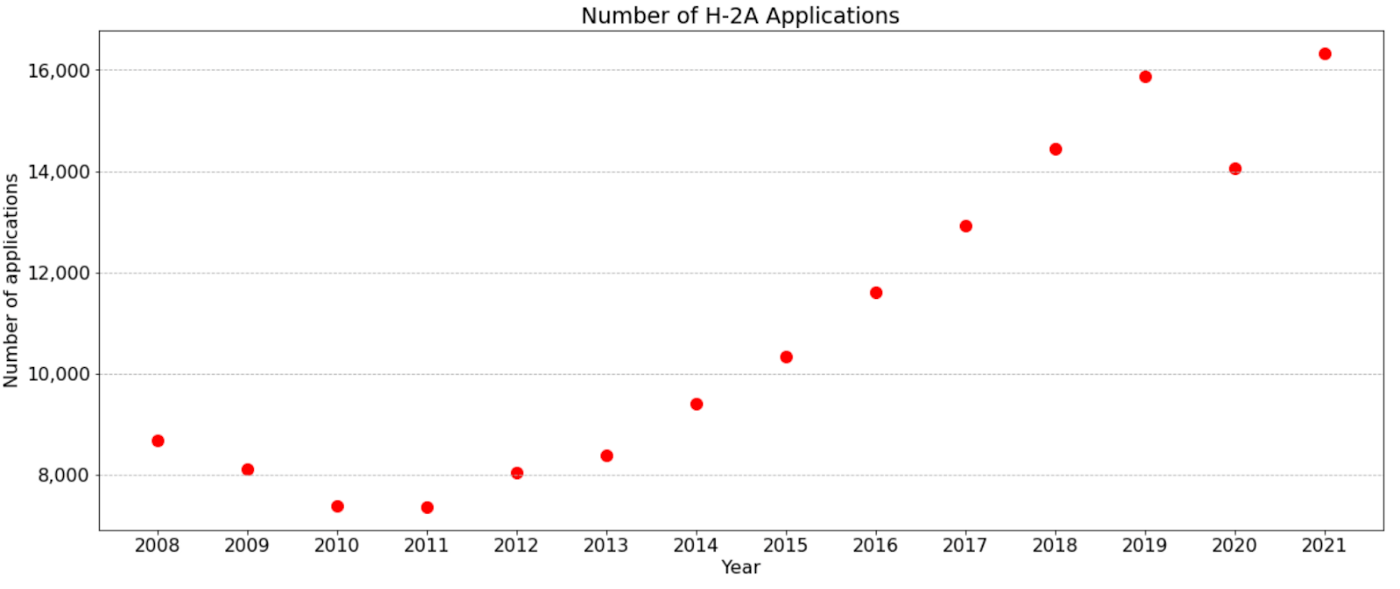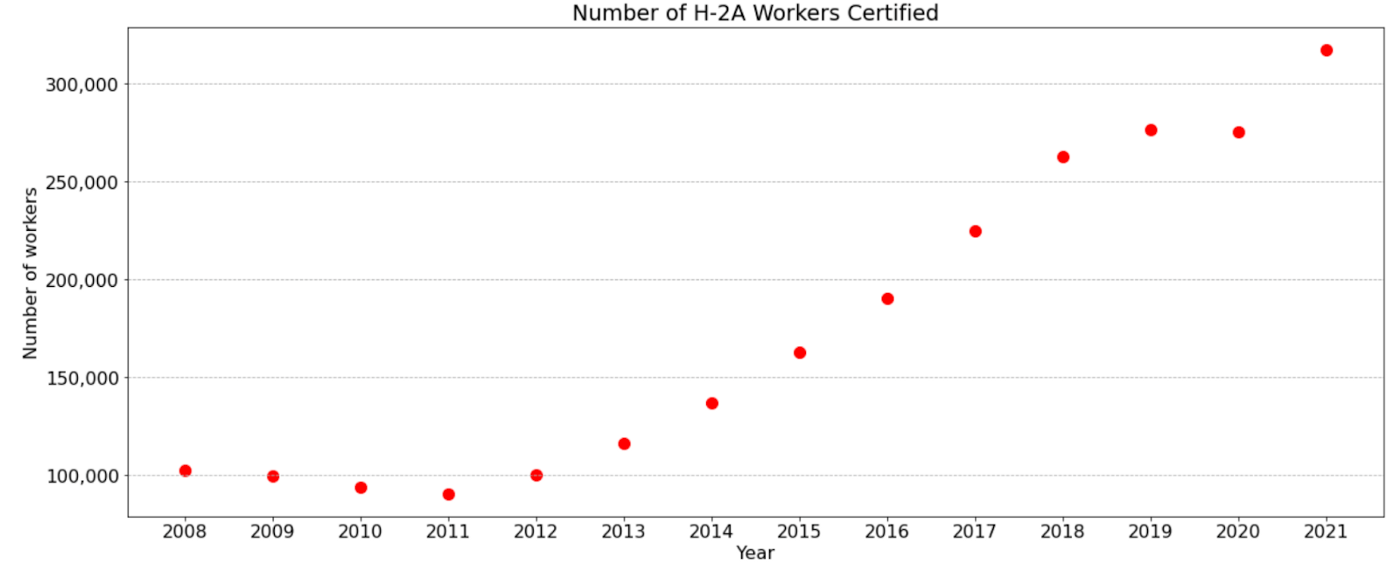In this blog post, we will explain why H-2A is a crucial program that supports the livelihood of countless farmers and workers.
H-2A is a US government program that allows farmers to bring foreign seasonal agricultural labor to the US. In 2021, over 300,000 workers came to the US under this program and over 16,000 farms across the country used the program. The H-2A visa lets workers stay in the US for one year, but this can be extended for up to three years. However, the program is designed for workers to not live in the US permanently; they must stay in their home country for at least three months every three years they are on the visa. Overall, the H-2A program is essential for farms to have the labor they need to stay in business, and it helps foreign workers make more money than they can in their home country.
Usage of the H-2A program has increased drastically over the last couple of decades. Over the past decade alone, the number of farms using H-2A has doubled and the number of H-2A workers approved has tripled. The reasons for this are varied, but includes the fact that US domestic workers are not interested in farm work, despite rising wages (1). Many farms that we spoke to indicated that they could not find domestic workers, which is why they turned to H-2A labor.


The H-2A program is essential for farms to operate. Around 30% of hired farmworkers are employed using the H-2A program. During COVID, border restrictions and delays in visa processing caused H-2A workers to not arrive in the US on time. This meant that many farms struggled to find labor to operate their farm and harvest the crop (3,4).
The H-2A program is also important for the livelihoods of many foreign workers. Most foreign workers willingly return year over year, indicating that the H-2A program is attractive. The main driver for interest in working in the US is the high wages offered to temporary workers. The average annualized wage for H-2A workers was $25,000 in 2019, while the Mexico annualized minimum wage for farmworkers was less than $1,200 (1). Therefore, working in the US represents a 20 time increase in wages. Furthermore, the H-2A program requires housing and food to be provided to workers.
The H-2A program provides a legal path for workers to come into the US to work, and therefore reduces illegal immigration. From the perspective of farmers, having legal labor is more desirable than illegal labor since it reduces the risk of fines. From the perspective of migrant workers, H-2A is more desirable than illegal immigration since it guarantees higher payment and workers rights and reduces the possibility of deportation. According to the Cato Institute, there is a strong relationship between increase in Mexican H-2A workers and a reduction in Mexican illegal immigrants at the border (5).
Overall, we can see that the H-2A program is important for farmers to have labor to operate their farms and migrant workers who want to get paid more to support themselves and their families. Furthermore, the program encourages legal migration. The H-2A program is not perfect, however. There are many problems, including worker abuse, processing times, and regulations. However, the program is still vital to many parties despite these problems.
Sources
- https://www.cato.org/publications/immigration-research-policy-brief/h-2a-visas-agriculture-complex-process-farmers-hire
- https://www.ncdemography.org/2020/04/16/counting-farmworkers-in-the-2020-census/
- https://www.washingtonpost.com/business/2020/03/18/seasonal-farmworkers-visas-food-supply-chain-coronavirus/
- https://www.reuters.com/article/us-health-coronavirus-usa-wheat/u-s-farmers-scramble-for-help-as-covid-19-scuttles-immigrant-workforce-idUSKBN2431BQ
- https://www.cato.org/blog/h-2-visas-reduced-mexican-illegal-immigration